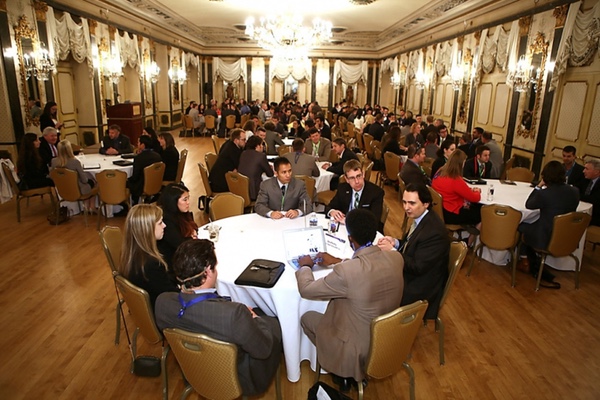The next generation of activities for space’s next generationby Hannah Kerner
|
| The mentors’ advice was valuable, but with so little time to talk and for them to get to know us, the advice was more like something we could read in a book. |
I sat next to a young woman who had spent several years in the Navy and was now thinking of going to graduate school—but she’d just had a baby and was worried about worklife balance in addition to the familiar fear of succeeding in school after years away from a classroom. I had been working at Planet Labs for the better part of a year and was taking a few months off to teach computer science at my alma mater, and was struggling to decide between two right decisions: staying in industry where I was rapidly learning new skills and making an impact, or pursuing a Ph.D. where I could delve into research and really upgrade my brain and thought processes.
The mentors’ advice was valuable, but with so little time to talk and for them to get to know us, the advice was more like something we could read in a book: it was lacking the impact and relevance we were both searching for. We started smalltalking as we waited for the mentors’ business cards and ended up spending the next several hours exchanging experiences and advice. Our minds were blown. We were closer to what we were searching for.
In her book Lean In, Facebook COO Sheryl Sandberg writes:
Peers can also mentor and sponsor one another. There is a saying that “all advice is autobiographical.” Friends at the same stage of their careers may actually provide more current and useful counsel.
This claim is supported in the feedback I’ve heard from young people about activities hosted for young professionals that put emphasis on collaboration and networking between peers. I recently hosted a Leadership Conference for Students for the Exploration and Development of Space (SEDS), a nonprofit that empowers young people to participate and make an impact in space exploration. This fourday event was an “unconference”: the agenda was created based on attendees’ answers to two essential questions—“What do you want to learn about?” and “What do you want to talk about?”—prior to the event.
SEDSUSA Board of Directors member Andrew Newman (Virginia Tech ’17) said it “exposed me to more opportunities beyond just the traditional aerospace engineering track in space. I've made great peer connections that can be of mutual benefit as we all enter the space industry.” Just after the retreat, he decided to change his major from aerospace engineering to computer science—a decision that made him much happier and was a better option for how he wanted to contribute to space exploration.
| But to really empower and inspire this new young generation of space leaders, we need to encourage young people to actively participate, and also provide resources for them to do so. |
Another Board member, Miekkal Clarkson (Arizona State Univ. ’16), reflected, “I definitely left with a sense of purpose that I never quite seem to find from other conferences. While I do volunteer at these conferences, and they leave me feeling very inspired, it is also a little overwhelming in the sense that all these companies/people are moving forward on a completely different level than you. This retreat differed because I was involved with the conversations, not an observer. I had a hand in the planning and debating, I can see and follow through with what was discussed, and I was on equal footing with my peers. We are individually invested instead of just watching and waiting for the results from the industry.”
I heard similar reports of students finding unique inspiration and direction from collaborating with peers at Space Generation Advisory Council’s (SGAC’s) Fusion Forum, which brings together 50 of the next generation of space sector leaders to exchange views on current, hot space topics through interactive panels.
Activities like Fusion Forum and Leadership Conference have been deeply impactful to their young participants’ lives and this impact lasts far after the conference activities have ended. They allow young people to “sit at the table”, as Sheryl Sandberg would say, and empower them to share their own ideas as well as hearing and reflecting on those of their peers.
Space industry leaders have recognized a need to cultivate young talent and they have taken important first steps toward doing this effectively. But to really empower and inspire this new young generation of space leaders, we need to encourage young people to actively participate, and also provide resources for them to do so. Work with organizations that specialize in peer mentorship like SEDS and SGAC to create effective activities for young people. Rather than creating a token “young person” panel expositing their promise and accomplishments, invite them to sit at the table, to participate in all discussions. Then we will see young people and the space industry thrive.
